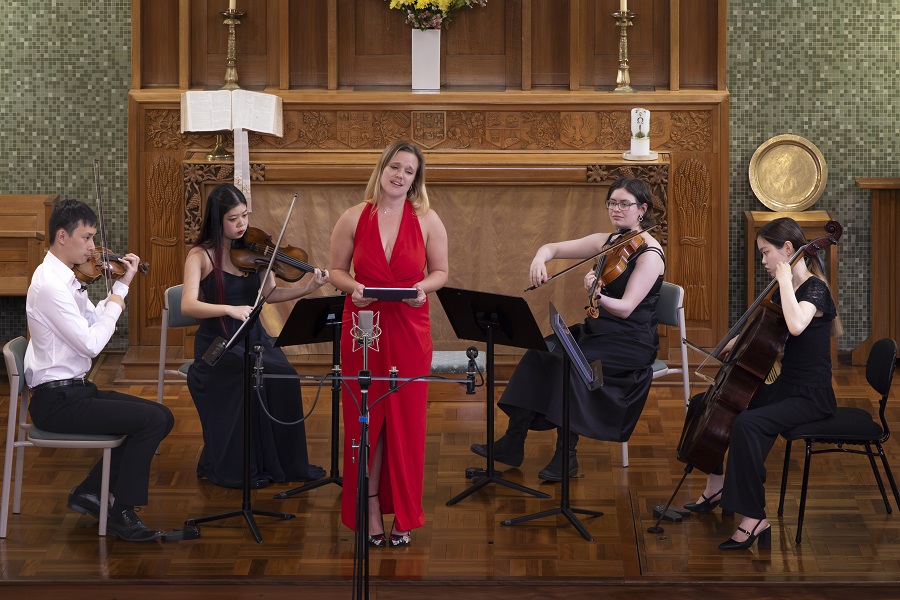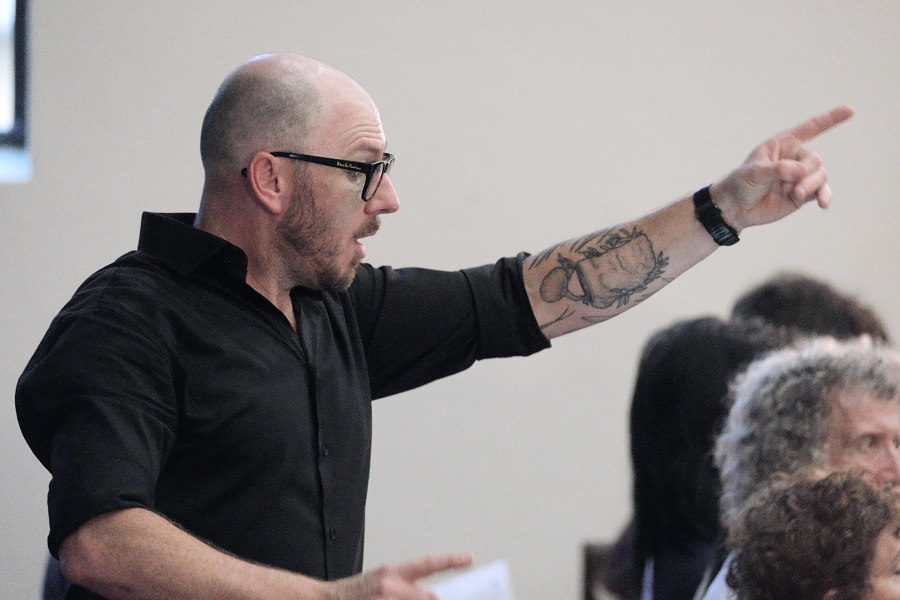
Music / Heavenly (John Rutter’s Requiem), the ANU Choral Society. At All Saints’ Anglican Church, Ainslie, May 25. Reviewed by SARAH BYRNE.
I was brought up in a house steeped in both Catholicism and choral music, when John Rutter emerged on the scene in the mid 1980s; and his music was a revelation.
My mother’s efforts to update the church choir repertoire had hitherto rested on the slender spine of a hideous orange-coloured paperback containing even more hideous contemporary hymns, next to which Kumbayah was practically Handel. The gorgeous modern harmonies of Rutter were an immediate hit with choir and congregation alike.
Rutter’s Requiem was the first of his pieces I heard as a teenager, and not having heard it again for quite some time I was keen to attend this concert.
Veronica Thwaites-Brown is the new director of the ANU Choral Society (known by its reverse acronym SCUNA), and this piece was well chosen. Following the seven-movement form of the Faure Requiem, it is, quite simply, beautiful. The final “dona eis requiem” from the third movement (the Pie Jesu) must be one of the loveliest phrases ever recorded.
The unauditioned nature of a community choir is both its great strength and biggest weakness. While it was evident that not all voices were trained to the same level, their camaraderie and love of the music shone, and Thwaites-Brown did a masterful job of keeping the large ensemble in tune and on time, with an impressive control of dynamics and diction.
While the two sopranos doubling in the solo passages (Lauren Ashman and Lily Nguyen) had pure, true and pretty voices, they were diffident, and at times almost inaudible. I had to repress my inner Mama Rose. This will doubtless flesh out in time; the bones are certainly there.
The choir was accompanied by several musicians, first of whom is their stalwart and indefatigable repetiteur Dr Anthony Smith (also indispensable to the Llewellyn Choir and the Canberra Choral Society). He was joined later for the Sanctus by the deep gravitas of Zachary Connor’s cello, who at times drew almost horn-like tones from its lowest register. The lyrical playing of flautist Natalie Iles-Buchman was an ideal enhancement for the 23rd Psalm.
Four shorter pieces made up the second part of the program, starting with Connor’s solo performance of the Sarabande from Bach’s Cello Suite No 6 in D Major. Although flawlessly executed, I confess this interpretation did not appeal to me, although I can see how it will sit well alongside the Shostakovich planned for his upcoming concert.
The concert concluded with three very well performed songs – the spiritual “Deep River”; Bruckner’s “Locus Iste”, and Mendelssohnn’s “Lord In Thy Mercy”. The choir’s control in these songs was a real pleasure; dynamics and cadences tight and professional.
I look forward to seeing where Thwaites-Brown takes SCUNA next.
Who can be trusted?
In a world of spin and confusion, there’s never been a more important time to support independent journalism in Canberra.
If you trust our work online and want to enforce the power of independent voices, I invite you to make a small contribution.
Every dollar of support is invested back into our journalism to help keep citynews.com.au strong and free.
Thank you,
Ian Meikle, editor




Leave a Reply